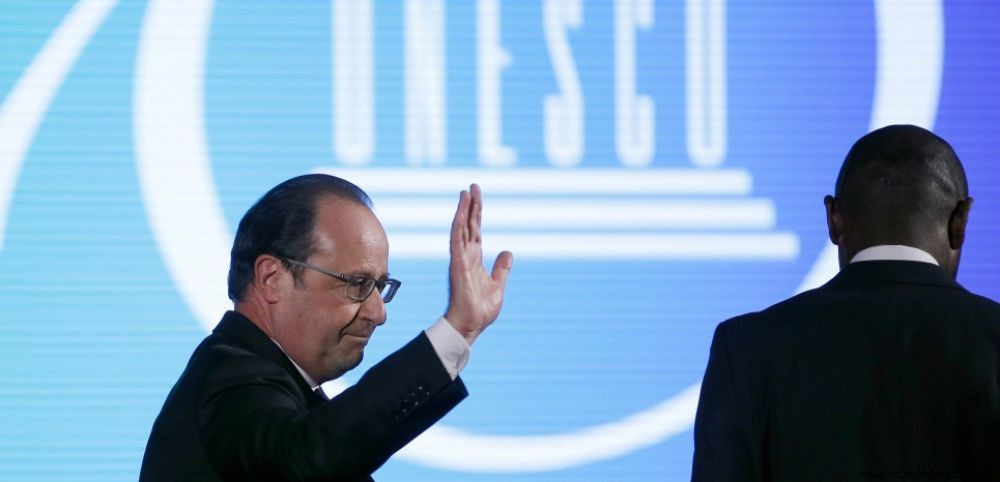 François Hollande at Unesco on November 17, 2015.
François Hollande at Unesco on November 17, 2015. SHELTER . "The right to asylum applies to people [...] but asylum also applies to works, world heritage. This is why this provision will be included in the law Freedom of creation that the Minister of Culture Fleur Pellerin is in charge of having voted in Parliament" explained on November 17, 2015 in the afternoon François Hollande during a speech delivered in Paris as part of the 70th general conference of Unesco.
A major exhibition in Lens organized by the Louvre
President Hollande then announced a series of measures, inspired by Jean-Luc Martinez, director of the Louvre Museum, who submitted a report on the subject to the Head of State. It is thus "decided to introduce customs control on the import of cultural property and France will incorporate into its law the resolutions of the Security Council prohibiting the transport, transit and trade of movable cultural heritage that has illegally left some countries" he specified. This is the effective implementation of UN Resolution 2199. Adopted on February 12, 2015, the latter condemns the destruction of cultural heritage and adopts legally binding measures to combat the illicit trafficking of antiquities and cultural objects from Iraq and Syria. In addition, shelters will be created in France to accommodate museum collections that feel threatened. The Head of State also asked the President of the Louvre, Jean-Luc Martinez, to send an expert mission to Baghdad soon to assess the means necessary for the preservation of the treasures kept there. "Since the 19th century, France has worked to reconstruct and rediscover the past of ancient Mesopotamia, the oldest civilization in the world" recalls the Elysée. "The Louvre, France, French archaeologists, have a common history with Iraq and Syria. This is why we are committed to helping our friends protect their heritage within the framework of international conventions and of Unesco" also explains Pascal Butterlin, professor of archeology at the University of Paris 1.
DESTRUCTIONS . The Daesh group is indeed pursuing a scorched earth policy in the territories it has occupied or which are still under its control. Many pre-Islamic antiquities and some later works of art such as the tombs of Sufi Muslim saints were destroyed by religious fanatics, others are recovered to feed an odious traffic of archaeological remains. "We need to put words to these acts:it's cultural cleansing" said Irina Bokova, Director General of UNESCO. At the end of February 2015, a video released by the Islamic State (IS) group showed the ransacking of pre-Islamic sculptures from the Mosul museum in Iraq. Further destruction of the famous sites of Nimroud, Hatra, and Khorsabad will follow. Then followed that of the city of Palmyra in Syria and the assassination of the director of antiquities in the city. Listed as a UNESCO World Heritage Site, the ancient city of Queen Zenobia is one of the treasures of the Roman era in the Middle East. It contained hundreds of columns, temples and a necropolis of 500 tombs and funerary monuments.
DIGITAL . In addition to the measures that have just been announced and whose practical details will be discussed during the debate on "Creative Freedom", Emphasis will also be placed on the contribution of digital technology to the safeguarding, dissemination and transmission of works and knowledge. "Today, technological developments, including the rise of 3D scanning, will one day allow us to reconstruct damaged or destroyed sites or make other choices" writes in his report Jean-Luc Martinez. The archives of the French excavations will thus be digitized and made available to Iraq. And other actions could be initiated such as a vast 3D digitization plan for heritage sites. The destruction of the Mosul museum has already been followed by initiatives in this direction, a group of European scientists having recovered photos of the destroyed objects to reconstruct them by photogrammetry. Finally, and this is the 41st proposal of the Martinez report, it is a question of encouraging the development of virtual tours of destroyed or endangered sites. An approach that will not succeed for several years.
